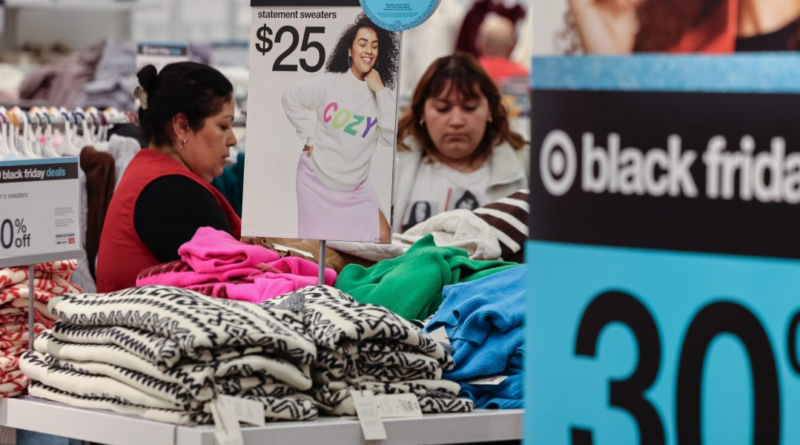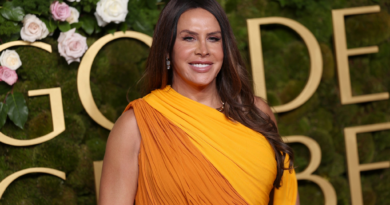Target treks off the beaten path amid sales slump—by selling its own-brand products at other retailers
Target is continuing to lean into its familiar strategy of private-label brands that have brought the Minnesota-based company $30 billion in annual sales—but now it’s veering from the path of competitors by putting its products in other retailers.
The big-box chain announced on Monday plans to expand its Cat & Jack children’s clothing line across 85 Hudson’s Bay Co. Canadian department stores, adding outerwear and shoes to the brand’s 1,400 items, most of which are under $15. Since the partnership launched in March, the brand has been incredibly popular in Canada, Target reported, resulting in a 15% increase in basket size at Hudson’s Bay.
Target has no plans to replicate its own-brand expansion in the U.S., but its Cat & Jack expansion is the latest of the company’s tactics to win over consumers in times of slashed discretionary spending. In February, the company launched a new “dealworthy” budget brand of under-$10 home goods. That’s after 2023 saw a 1.7% drop in sales to $105.8 billion.
Target has failed to make the same inroads as rival Walmart, where sales are steadily growing, though their strategies have converged. Last week, Walmart launched a store-brand grocery line, and in March, Target launched its paid reward program Target Circle 360, parroting Amazon Prime and Walmart+.
It should be no surprise that retailers are growing their private-label brands. About 60% of shoppers say they buy private labels at least somewhat frequently, per a September 2023 CivicScience report. And according to market research firm Circana, sales of own brands grew 6% in 2023 to $217 billion. But while retailers are taking cues from each other and consumers to line their shelves with own-brand items, Target is taking a more unconventional route, experts say.
Defying convention
Braden Douglas, founder and CEO of marketing agency Crew Marketing Partners, told Fortune that Target’s play to expand its private brands beyond its own stores isn’t a popular gambit.
“It’s not very common because most other retailers don’t want to help another competitor increase revenue,” he said.
The tough economic climate means that big-box retailers are more likely to take strategic risks to attract consumers. For Target, the move makes sense, Douglas argued: Target has a solid supply chain that allows it to be nimble and expand, but is limited by its own geography that’s almost exclusively in the U.S. Target made its debut in Canada in 2013, purchasing the leases of over 200 Zellers, a failed retail chain, from Hudson’s Bay. Because of Target’s rapid expansion, the venture wasn’t expected to be profitable until 2021, and the company pulled the plug on all of its Canadian chains less than two years later. Expanding offerings for Hudson’s Bay could offer Target a do-over of its rocky experiment up north.
“There’s still great demand from that,” Douglas said. “I like that they’re [going to] dip their toe back into the water.”
Calculated risk
While Target’s private-label strategy is uncommon, that doesn’t mean it’s unheard of, argued Katrijn Gielens, professor of marketing at University of North Carolina at Chapel Hill’s Kenan-Flagler School of Business. Even Target carries products from competitors’ private-label brands, including No7, the skincare line from pharmacy chain Boots. Gielens has seen similar moves from national grocery chains successfully putting health-conscious private-label brands in smaller, regional stores.
Gielens agreed with Douglas that competitors will not frequently put their own-brand products in each others’ stores. But she added that expanding private brands to new geographies or to appeal to specific demographics is a cheap way to build exposure, because buying and distributing private brands on a larger scale often has cost-saving advantages.
“You need a certain reputation; you need to have certain expertise and knowledge,” she said. “It’s not easy to pull off.”
The practice of expanding private-label brands beyond their originating retailer grew more common from 2008 to 2012, and the trend tends to emerge in times of economic unease, Gielens said. Not only do private brands offer an effective sales strategy during times of recession, but interest in those brands is usually sustained in the years that follow. From 2008 to 2022, private brands across retailers made an estimated $35 billion, Forbes reported, using data from Nielsen and Information Resources, Inc.
As inflation remains stubborn and consumer confidence still lower than it was pre-pandemic, Gielens expects to see companies making moves similar to Target’s, even riskier ones, to take advantage of private-brand favorability.
“This is when people are more open to explore and to also consider things that come with a slightly lower price point,” she said. “It’s the right window of opportunity.”




